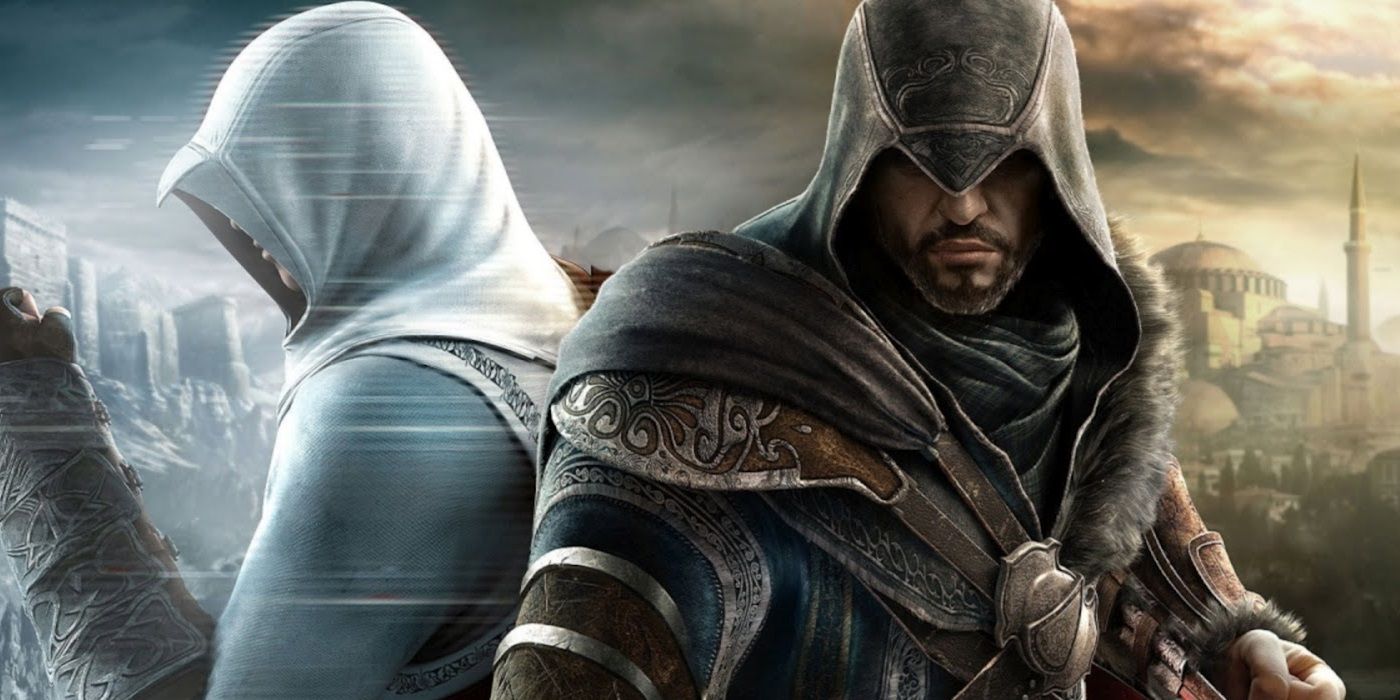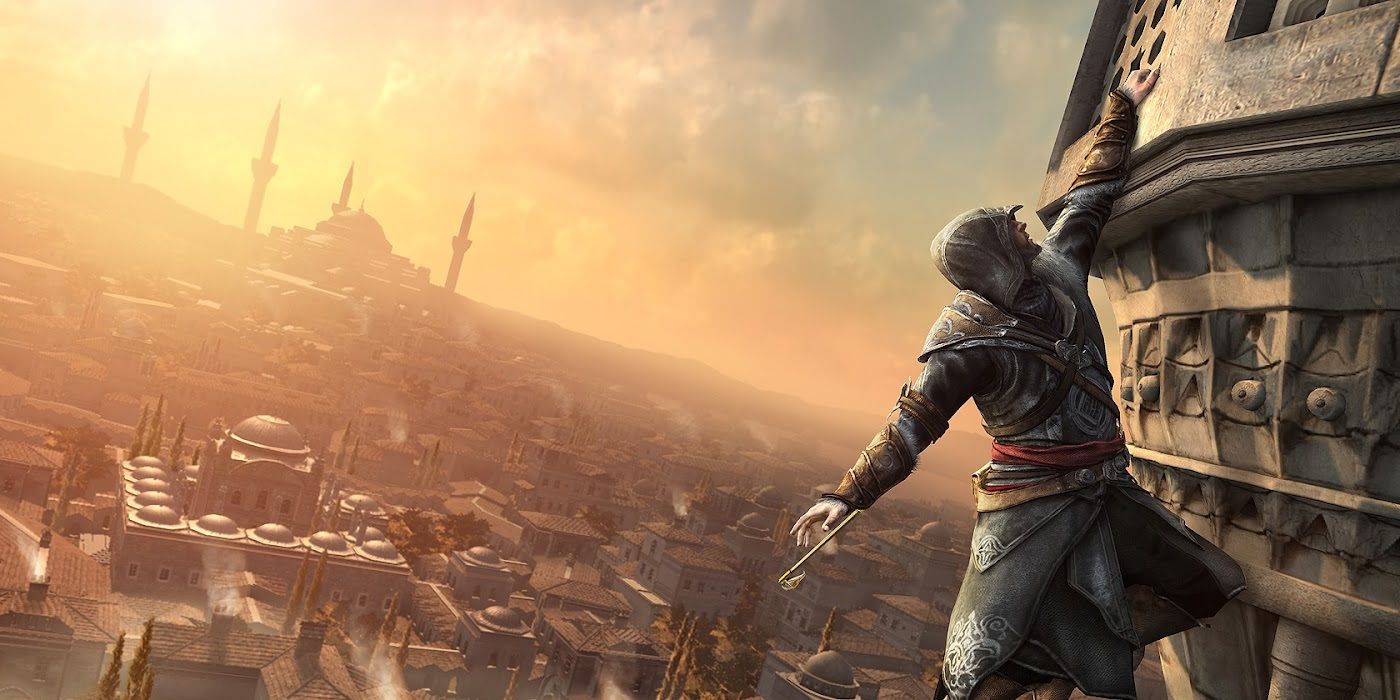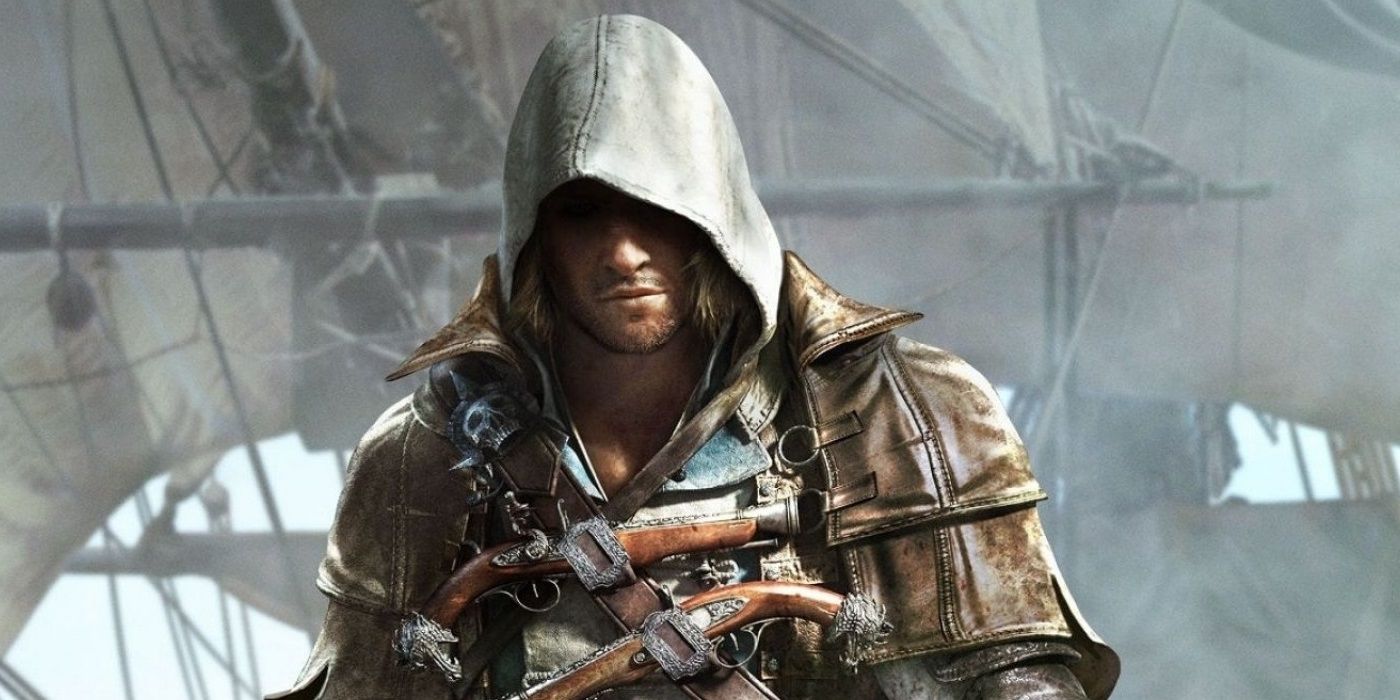Each Assassin's Creed entry strives to innovate off of what came before. Following the first game, its sequel chose to overhaul its entire playstyle, perfecting its fluidity in the process. The Ezio trilogy then built off its established style and added more ways to make combat even more accessible, giving players the feeling that they were also becoming a master assassin. Finally, by Assassin's Creed Revelations, the formula reached its peak with the inclusion of the hookblade.
Gifted to a much older Ezio by the Ottoman Assassin, Yusuf Tazim, the hookblade was an attachment that improved combat and mobility. Acting as a literal hook at the end of a hidden blade, Ezio navigated the world better than in his earlier titles. The hookblade was an amazing and welcome addition to the series and nearly made an appearance in Assassin's Creed IV: Black Flag before being scrapped for a comical reason.
For Ezio, the hookblade became a compromise for his older age. Since he can't move as he used to, the hookblade not only improved his climbing abilities, it makes jumping up and grabbing ledges incredibly easy while extending his grip. Additionally, in combat, Ezio could now roll over enemies, throwing them off balance. A similar movement was seen by enemies in Assassin's Creed III, who would roll over Connor in combat. While the title was another overhaul following the Ezio trilogy, it was clear that the elements for a hookblade never left.
When the time came for Edward Kenway to don the hood as a swashbuckling pirate, lead writer for Black Flag and Revelations, Darby McDevitt was against the idea of including the hookblade. To McDevitt, including the blade would callback to the idea of the hook-handed pirate, a stigma that has followed that era of history for decades. In reality, pirates rarely, if ever, used hooks instead of their hands.
While the hookblade never makes an appearance in future titles, Kenway's traversal has its own elements that harken back to the benefits that came from the hookblade. This includes the speed that Ezio had by hanging on a rope with the hook and ziplining through Constantinople. While Edward can't zipline, his speed during traversal is still a major factor and is shown when he ascends a ship's mast. By kicking the rigging for the mast, he can propel himself upwards at speed similar to Ezio's zip lining. Edward can also swing from ropes, helping to establish that while the hookblade isn't present, the speed it promotes is still prevalent.
While the hookblades return in Black Flag could've made for an interesting nod to the classic pirate imagery from decades ago, the decision to exclude the hidden blade variation was for the best. Future titles continue to showcase their own versions of the hidden blade, whether it's the phantom blade or the immensely fun rope launcher. Still, none have matched the reliability of the hook blade. The tool may never be seen again, but there's no denying the impact its inclusion has made on the franchise.



